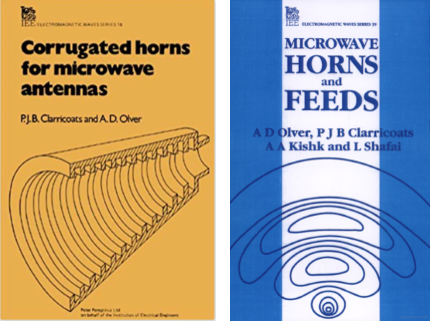Our History
The Antennas & Electromagnetics Antennas Group at Queen Mary University of London was established by Prof. Peter Clarricoats in 1968 with an initial research focus on Optical Fibre and Horn Antennas.
Through his leadership the Group made significant contributions to the UK antenna and microwave industry. Over 40 years of his academic career, Peter made numerous notable achievements including pioneering designs for shaped reflectors, reconfigurable reflectors and especially corrugated horns. The latter are now universally used in satellite ground stations and in spacecraft.
Peter was also a pioneer of optical fibres, publishing one of the first monographs on this topic in 1975. He established the theory, which has since been widely used in the context of optical fibres, of electromagnetic propagation on dielectric and ferrite structures.
His personal research was recognised through many significant awards from the IEE (now IET) and IEEE where he received the highest honour from the IEEE Antenna Society (APS), The Distinguished Achievement Award in 2001. His contribution to microwaves in Europe was recognised through the European Microwave Association’s Microwave Prize in 1989 and the Outstanding Career Award in 2004.
Peter was vice-president of the Institution of Electrical Engineers, from 1989 to 1991, and vice-president and treasurer of URSI (the International Union of Radio Science) from 1993 to 1999. He was elected Fellow of the Royal Society, the Royal Academy of Engineering, the Institute of Electrical and Electronics Engineers (IEEE) and the Institution of Engineering and Technology (IET). He was awarded with CBE in 1996.
Peter worked with other leading figures to establish new journals and conferences. Perhaps the journal he was most proud of was the internationally renowned Electronic Letters, which remains one of the most successful technical publications of all time.
After he retired from his full-time post in 1997, Peter continued to supervise research and through his personal innovation developed a compact horn needed for satellites and spacecraft. In September 2015, he was awarded the Sir Frank Whittle medal of the Royal Academy of Engineering, one of the academy's highest accolades.
What follows is a personal history of the group from Peter, written on the groups 50th anniversary. Peter sadly passed away in January 2020.
A Personal History
Prof. Peter Clarricoats
CBE, FREng, FRS
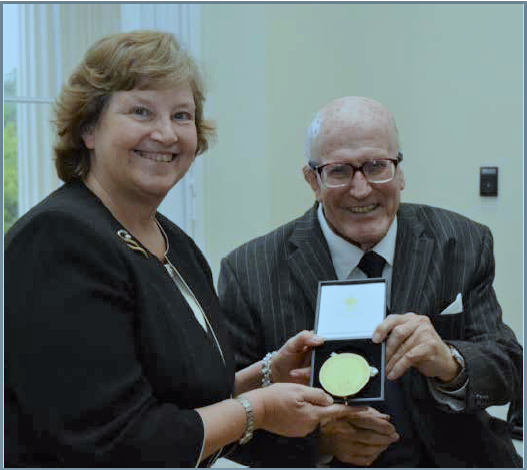
Photo of Peter receiving Sir Frank Whittle Gold Medal from The President of The Royal
Academy of Engineering.
In 1967 I joined Queen Mary College from my Chair at Leeds University and formed the Electromagnetic Group that later became the Antenna Group.
Initially there were two main topics: Optical Waveguides and Antenna Horns. It may be a surprise for many to know that initially there were only five of us working on optical fibres anywhere in the world one of whom later won a Nobel Prize. Today we just accept that optical fibres are the basis for broadband. The other topic which we explored with David Olver and Clive Parini was the theory and experimental study of Corrugated Waveguides and Horns. Here we were able to show that an apparently unsolvable problem could be solved by a simple approximation. That is as important today when approaching an apparently unsolvable problem. The study of Corrugated Horns has led to their almost universal adoption as Antenna Feeds for Reflector Antennas. As an example:
The Greenbank Radio Telescope in the USA (the largest fully steerable Reflector Antenna) deploys 36 feed horns designed using the method described in the book by myself and David Olver published by the IEEE in 1984. Other pioneering studies include the design of Shaped Reflectors to map a region on earth from a satellite and the investigation of Horns with Dielectric Loading.
On my retirement in 1997 David Olver and subsequently Clive Parini became Head of Group and building on work begun jointly with David Olver, developed what is arguably the most comprehensive Antenna measuring facility among European Universities. Clive together with Yang Hao went on to study Terahertz Antennas, on body communication and extensive pioneering research on Antennas using metamaterials. Throughout the 50 years we have been supported by Grants from EPSRC and occasional contracts with ESA. In particular
one should mention two 5 year Grants running consecutively from 2005-2016 headed by Clive and Yang.
Many of the members of the Group went on to achieve senior positions in Industry and Major Organisations in their countries of origin and many became professors in universities both in the U.K. also in their home countries.
The History Of The Antenna Measurement Laboratory
David Olver joined the group in 1969 and was instrumental in creating the group’s experimental facilities, initially with a small microwave lab and anechoic chamber in the QMUL Engineering building, and soon after a larger test facility based in a large warehouse housing several Engineering departments research activities. Marshgate Lane as it was called, was located approximately where the Stratford Olympic Stadium is now, and housed the groups unique Compact Antenna Test Range (CATR) based around illuminating the upper half of a standard 3m parabolic communications reflector antenna, to create a single offset CATR. By the mid 1980’s the Electronic Engineering Department’s High Voltage Materials research activity had ended and with it the need for the High Voltage Laboratory, which when built in 1959, was the largest high voltage laboratory in an UK university. This five-story high chamber with floor dimensions of 17.5m x 13m thus became the site for the current Antenna Measurement Laboratory. Initially it contained just a single general purpose anechoic chamber of dimensions 3m x 3m x 9m long and in the late 1980’s the millimetrewave Compact Antenna Test Range (CATR). In the early 1990’s the CATR was enclosed in a full anechoic chamber as part of a collaboration with BAE-Systems to use the CATR to measure the AMSU-B space based radiometer at up to 183GHz.

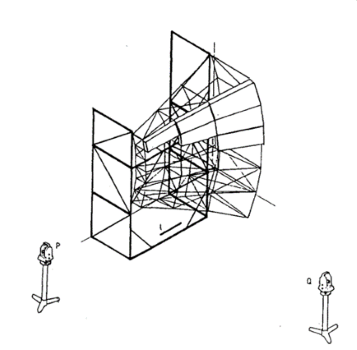
Millimetrewave single offset CATR
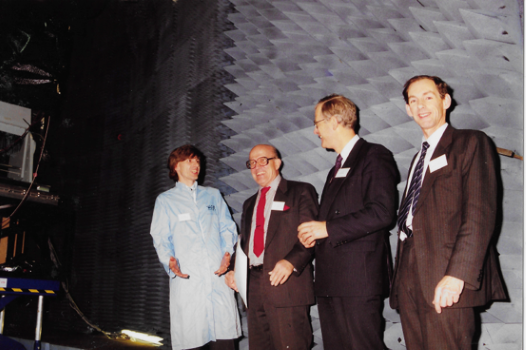
Official opening of CATR. Left to right Clive Parini, Peter Clarricoats, Alan Rudge, David Olver
In the mid 1990’s a fully screened anechoic chamber (6 m x 5 m x 3 m) provided by Nokia UK was installed for low microwave frequency measurements.
In 1999/2000 we designed and constructed (with the help of Thomas Keating Ltd) the tri-reflector millimetrewave CATR (mmCATR) for operation up to 325GHz.
In 2011 a major refurbishment of the laboratory took place with the addition of a mezzanine floor containing a new TeraHertz Laboratory.
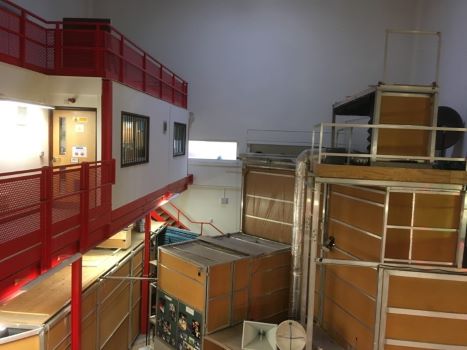
Left new mezzanine floor, right upper part of CATR chamber
In 2015 the CATR facility was upgraded with a new turntable system offer both CATR and Spherical near-field antenna measurements.
In 2018 a new joint mechanical workshop was built adjacent to the laboratory providing modern CAD/CAM capability.
In 2021 the new TERRA chamber was completed offering spherical near-field measurements of antennas up to 500GHz.

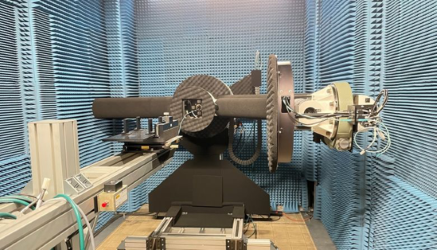
TERRA (THz antEnna fabRication and measuRement fAcilities) chamber
Timeline of the Antenna Group
What follows is a timeline of research activity during the groups first 50- years.
1968-1976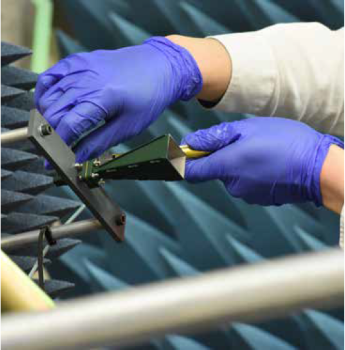

Long distance Communication
Optical Fibre Research
[Kao, Snyder, Dyott, Clarricoats, Hockham]
Low loss Waveguides and Horns
[Clarricoats, Olver, Parini]
1968-1974
Propagation and Scattering of EM Waves
Rocket Exhaust Plumes
[Clarricoats, Huckle, Kircho]
Scattering over Pine Forests
[Clarricoats, Arnold, Parini]
Detection of Buried Objects
[Clarricoats, Olver]
1971-1994
Satellite Ground Station Antennas
Reflectors
[Clarricoats, Poulton]
Horns and Array Feeds
[Clarricoats, Olver, Parini, Hockham]
Antenna Measurement Facilities {1971-2008}
[Olver, Parini, Dupuy]
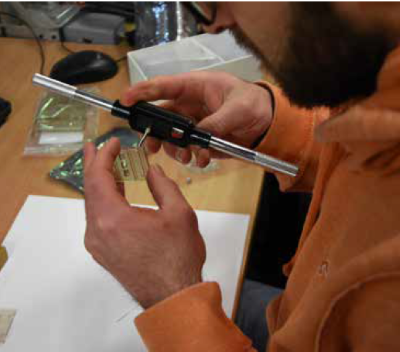 1981-2010
1981-2010
Airborne, Spacecraft and Satellite Antennas, Shaped Reflectors
[Rudge, Rusch, Chang, Clarricoats, Lindley, Brown, Parini, Olver]
Feeds and Arrays
[Olver, Clarricoats, Parini, Dubrovka, Dubrovka (Senior)]
Recongurable Shaped Reflectors
[Clarricoats, Monk, Brown, Crone]
Airborne Antennas
[Parini, Chen]
1997-2018
Millimetre & Terahertz Research
Devices for ESA Missions
THz Spectroscopy and Molecular Biochemistry
Metamaterials & Transformation optics
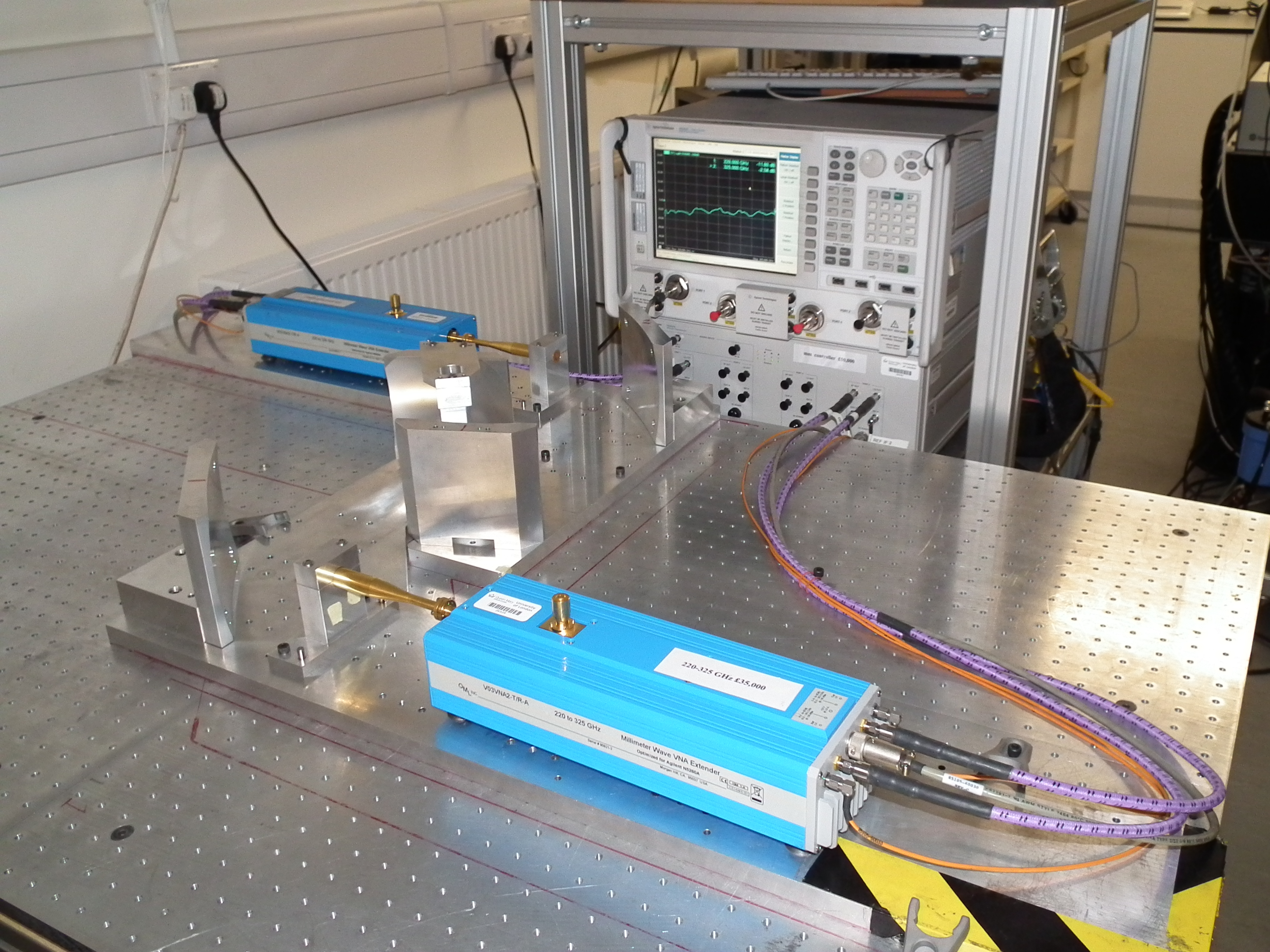 THz Measurement Facilities
THz Measurement Facilities
Microwave & MMW Imaging
Body-Centric Wireless Communication and Networks
Cognitive Radio and Machine-to-Machine Communications
Antennas and Radios for Localisation and Tele-control
Fundamentals and Software
Compact and array Antennas
Lens Antennas

